The Longmen Grottoes in Luoyang (洛阳龙门石窟) stand as the world’s largest and most extensive repository of stone carving art, hailed by UNESCO as the “pinnacle of Chinese stone carving art” and ranking at the forefront of China’s major grottoes. It is a designated World Heritage Site, a key national cultural relic protection unit, and a national 5A-level tourist attraction.
Initiated during the reign of Emperor Xiaowen of the Northern Wei Dynasty, flourishing during the Tang Dynasty, and continuing until the late Qing Dynasty, the Longmen Grottoes were constructed over a period spanning more than 1400 years, making them one of the longest-lasting cave complexes in the world. Presently, there are 2345 surviving cave niches and over 110,000 statues, many of which were originally adorned with vibrant color, although much of the pigment has faded over time.
The sculptures within the Longmen Grottoes were primarily commissioned by royalty and nobility, making them a unique royal cave complex worldwide. Notable sculptures include the colossal statue of Vairocana Buddha, fashioned in the likeness of Empress Wu Zetian, and the ancient Yangdong Cave, commissioned by Emperor Xiaowen for Empress Feng. Additionally, there are grottoes created by foreign artisans from India, Silla, Tokhara, and Kangju, featuring European patterns and ancient Greek pillars, showcasing the grottoes’ unparalleled international influence and significance.
Table of Contents
- Basic Information
- Location and Transportation
- Highlights of Longmen Grottoes
- Vlog about Longmen Grottoes
Basic Information
| Estimated Length of Tour | 3 – 4 hours |
| Ticket Price | 90 RMB |
| Opening Hours | 8.00 – 21.00; Last admission: 20.00 (20th March – 31st August) 8.00 – 18.00; Last admission: 17.00 (1st September – 19th March) |
| Telephone Number | 0086-0379-65980972 |
Location and Transportation
The Longmen Grottoes are located in the southern suburbs of Luoyang City, in Longmen Town, Luolong District, Henan Province, China. The specific address is 13 Longmen Middle Street. To get there, you can take bus 53, 60, 71, 81, 99, 118, Tourist Line 2, Tourist Line 3, or Tourist Line 4, and get off at Longmen Shiku Stop (龙门石窟站). Alternatively, since Luoyang is not a very big city, taxi also serves as a cost-effective and convenient choice.
Highlights of Longmen Grottoes
Grotto Complex in the West Hill
Great Vairocana Buddha Grotto
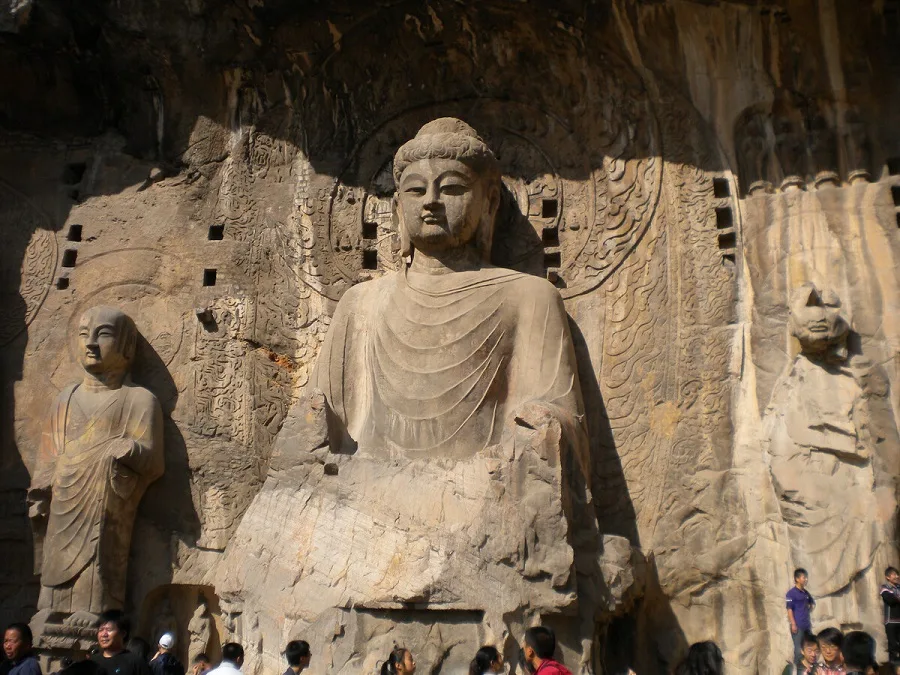
This grotto features nine Buddha statues. At the center stands the Great Vairocana Buddha, meticulously carved in the likeness of Empress Wu Zetian herself. Flanking the main Buddha are his disciples, Mahakasyapa on the right and Ananda on the left, followed by Bodhisattvas Manjushri (to the right) and Samantabhadra (to the left), along with powerful-looking Heavenly Kings and formidable guardians. Together, they form a group of highly expressive and emotionally resonant artistic figures.
Carved during the reign of Emperor Gaozong of the Tang Dynasty, this colossal Buddha grotto received substantial patronage from Empress Wu Zetian. Construction began in 672 AD and was completed in 675 AD. The grotto measures over 30 meters in both length and width. The central figure of Vairocana Buddha, representing the Illuminator, stands at a towering height of 17.14 meters, with a head measuring 4 meters and ears extending to 1.9 meters. Renowned for its enigmatic smile, it is often hailed by foreign visitors as the “Mona Lisa of the East” and the “most beautiful statue in the world.” The Buddha’s facial features are full and rounded, with wavy hair patterns adorning the crown, crescent-shaped eyebrows, and gentle eyes gazing downward with a serene smile, resembling a wise and benevolent middle-aged woman.
Binyang Cave

Symbolizing the welcoming of the rising sun, Binyang Cave was constructed by Emperor Xiaowen of the Northern Wei Dynasty to honor his father, Emperor Xuanwu. Commenced in 500 AD, the construction lasted for 24 years and involved the labor of 802,366 people. However, due to palace intrigues and the death of the overseer Liu Teng, only the central cave (Binyang Middle Cave) was completed as planned. The Southern and Northern Caves were only completed during the early Tang Dynasty.
In Binyang North Cave, there is a remarkable Buddha statue known as the “Scissor Hands,” which represents a rare Buddhist mudra symbolizing strong determination. Binyang Middle Cave features a domed ceiling with a lotus canopy at the center, surrounded by eight celestial musicians and two offering celestial beings. The main Buddha in Binyang South Cave is Amitabha Buddha, depicted with a full face, broad shoulders, and a plump body, reflecting the Tang Dynasty’s aesthetic preference for corpulence.
Thousand-Buddha Cave
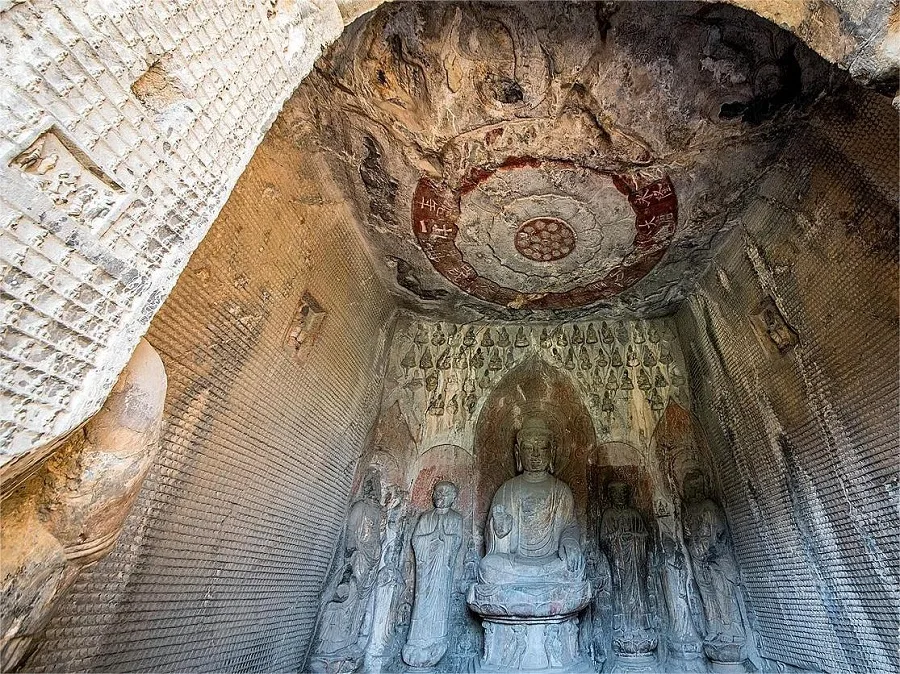
The Thousand-Buddha Cave earns its name from the 15,000 small Buddha statues carved within. Constructed in 680 AD, it is attributed to the efforts of Yao Shenbiao, a second-ranking palace maid, and Master Zhiyun from the Internal Monastery. This cave stands out as the most complete among the Longmen Grottoes. The main Buddha is Amitabha, seated atop a double-layered lotus pedestal, with a full and round face. The Buddha’s hand gesture forms the “Fearless Mudra,” symbolizing fearlessness in the face of the universe, asserting supreme authority. Carved around the Buddha’s waist are four powerful guardian figures, and behind the main Buddha are fifty-two lotus flowers, each bearing a seated Bodhisattva. Adorning the northern and southern walls of the cave are 15,000 small Buddha statues, each only four centimeters tall. Six celestial musicians are meticulously carved on the bases of the northern and southern walls, seemingly dancing to celestial melodies.
Lotus Flower Cave

Named after the large high-relief lotus flower carved on its ceiling, the Lotus Flower Cave dates back to the Northern Wei Dynasty. While lotus decorations are common in Buddhist cave ceilings, elaborate and sizable high-relief lotus flowers like those in the Lotus Flower Cave are rare. The design of the lotus flower atop the Great Hall of the People in Beijing is inspired by this lotus flower. Surrounding the lotus are graceful celestial maidens, depicted with slender waists, long skirts, and elegant poses.
The central wall of the Lotus Flower Cave features a Buddha statue flanked by two disciples and two Bodhisattvas. The central figure is a standing image of Shakyamuni Buddha, adorned in a simple robe with clear and crisp folds, depicting him as he appeared while delivering sermons. The two disciples, depicted in low relief, include Mahakasyapa on the left, characterized by deep-set eyes and a prominent nose, holding a staff, resembling a mendicant monk from the Western Regions. Unfortunately, the head of Mahakasyapa was stolen in earlier years and is now housed in the Guimet Museum in France.
Guyang Cave

Carved in 493 AD, Guyang Cave stands out as the earliest, most content-rich, and artistically intricate cave among the Longmen Grottoes. The cave boasts several hundred Buddha niches, adorned with elaborate carvings and decorations. Particularly striking are the diverse designs of the niches, lintels, and canopies, featuring various shapes like lotus petals, architectural forms, curtains, and tassels. The lintels are carved with stories from the life of Buddha. For instance, on the southern wall of Guyang Cave, the niche of Shakyamuni Buddha depicts his birth under the tree, stepping with lotus flowers blooming at each step, and receiving a dragon baptism, illustrating his miraculous birth and divine attributes.
Yaofang Cave
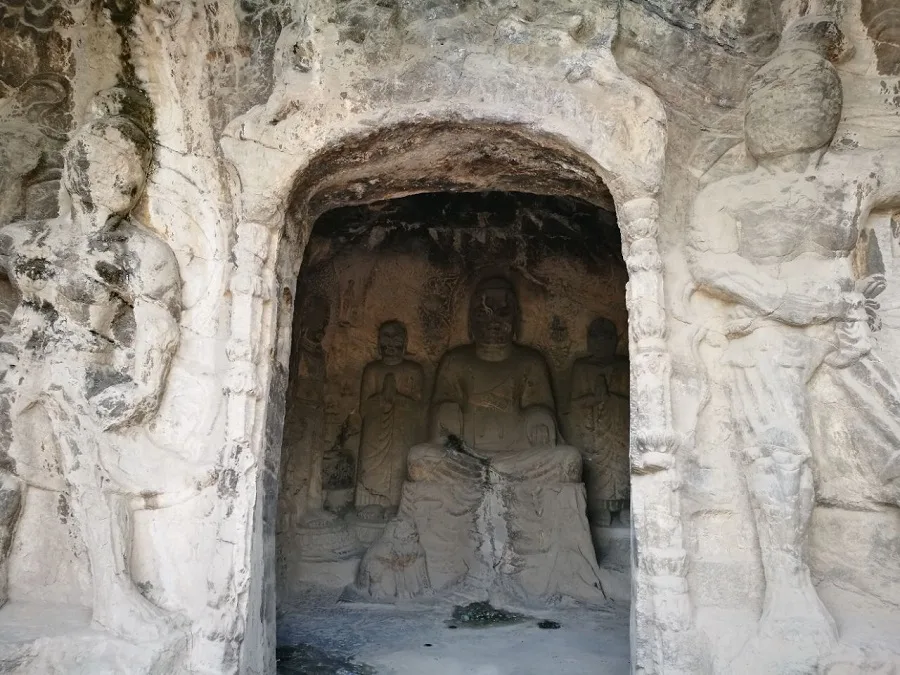
Named for the numerous Tang Dynasty prescriptions carved on its door, Yaofang Cave dates back to the late Northern Wei Dynasty and continued through the Eastern Wei, Northern Qi, and early Tang Dynasty periods. Within the cave are five Buddha statues characterized by rigid postures, minimal curves, short thick necks, and robust bodies. The headbands worn by the Bodhisattvas are notably long, reaching down to the upper arms, a distinct feature of Northern Qi statuary. The cave’s entrance is flanked by over 150 medicinal prescriptions, primarily consisting of plant, animal, and mineral-based medicines. These prescriptions cover various medical fields such as internal medicine, surgery, pediatrics, and ophthalmology, featuring medicinal ingredients commonly found in folk medicine, significantly benefiting the local population. The medicinal prescriptions carved here represent some of the earliest stone inscriptions of medical formulas in China, playing a crucial role in the study of traditional Chinese medicine.
Grotto Complex in the East Hill
Kanjing Temple
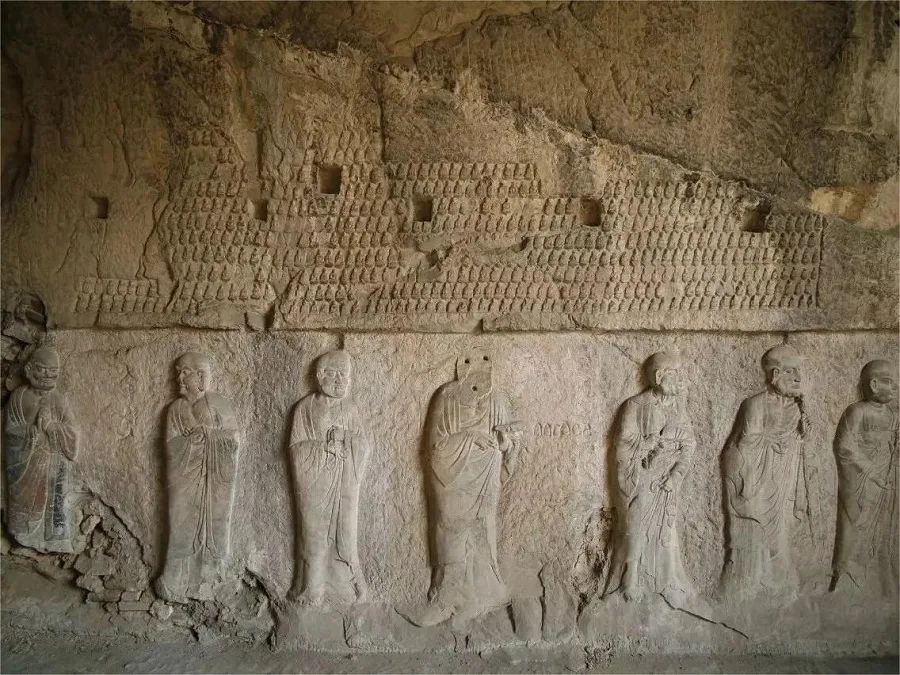
Kanjing Temple, carved during the reign of Empress Wu Zetian, features a double-chamber structure. The front chamber boasts dozens of small niches with statues carved into the cliff face. The main chamber measures 1170 cm in depth, 1116 cm in width, and 825 cm in height, with a flat square roof and vertical walls. The lower sections of the three walls are adorned with exquisite statues of Twenty-Nine Arhats, each standing at a height of 180 cm. This assembly is considered the finest representation of Arhat statues from the Tang Dynasty, carved based on the “Historical Records of Buddhist Treasures” by the Sui Dynasty scholar Fei Changfang. Notably, this site exclusively features Arhat statues, indicating its possible affiliation with Zen Buddhism and suggesting its function as a large-scale meditation hall.
Three Caves of the Drum Platform
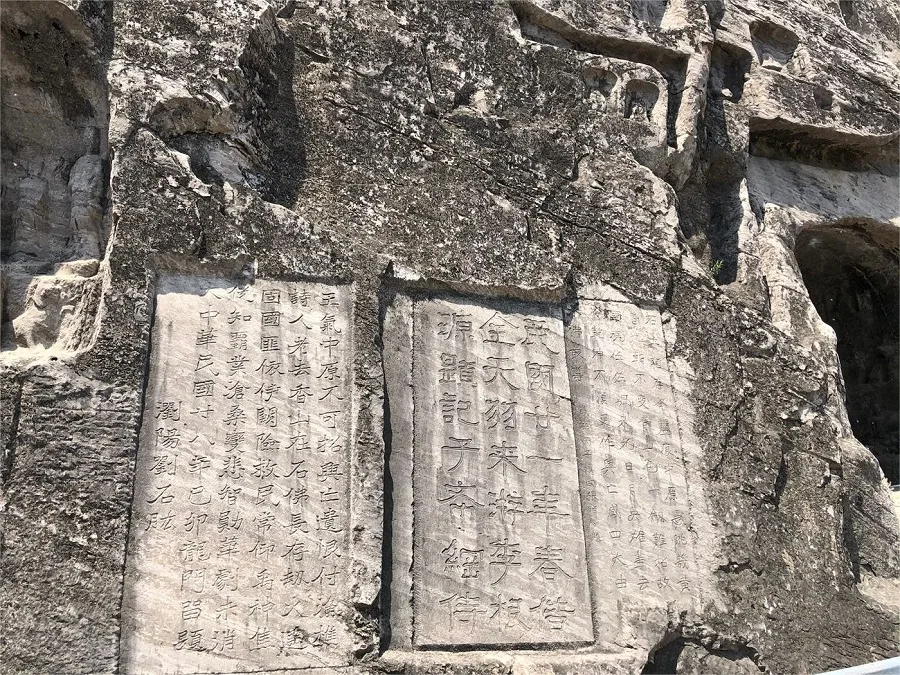
Legend has it that during the completion ceremony of Fengxian Temple, Empress Wu Zetian personally led a grand procession to Longmen Grottoes. To enhance the festivities, a massive orchestra played drums on this platform, leading to its name, the Drum Platform. The three adjacent caves facing the Drum Platform are collectively known as the Three Caves of the Drum Platform.
The central cave, also called the Great Vairocana Cave, is a cave of Wu Zhou Zen Buddhism, a sect primarily focused on meditation practice. Vairocana Buddha, representing the sun and symbolizing enlightenment, is the main Buddha statue on the east wall. Often referred to as “Mahavairocana,” this statue wears a crown and features Bodhisattva-like adornments on its arms. Standing at 2.45 meters tall, it sits in a meditative posture atop a 0.9-meter-high pedestal.
Cliffside Three Buddhas Niches

The Cliffside Three Buddhas Niches contain a total of seven Buddha statues, comprising three seated Buddhas and four standing Buddhas. This combination of statues is extremely rare in Chinese cave temples. The central Buddha is Maitreya, seated on a square pedestal, with the crown damaged and only the outline remaining, unpolished. According to Buddhist scriptures, Maitreya is the “future Buddha,” destined to succeed Gautama Buddha. Empress Wu Zetian utilized Maitreya’s belief to create propaganda for her reign, even adopting the name “Ci Shi” (meaning Maitreya) after ascending the throne, promoting the spread of Maitreya worship. The carving of the Cliffside Three Buddhas Niches emerged against this historical backdrop. With the fall of the Wu Zhou regime, work on the niches ceased. Although these statues are unfinished, they provide valuable material evidence for understanding the excavation process of cave statues.
Xiangshan Temple
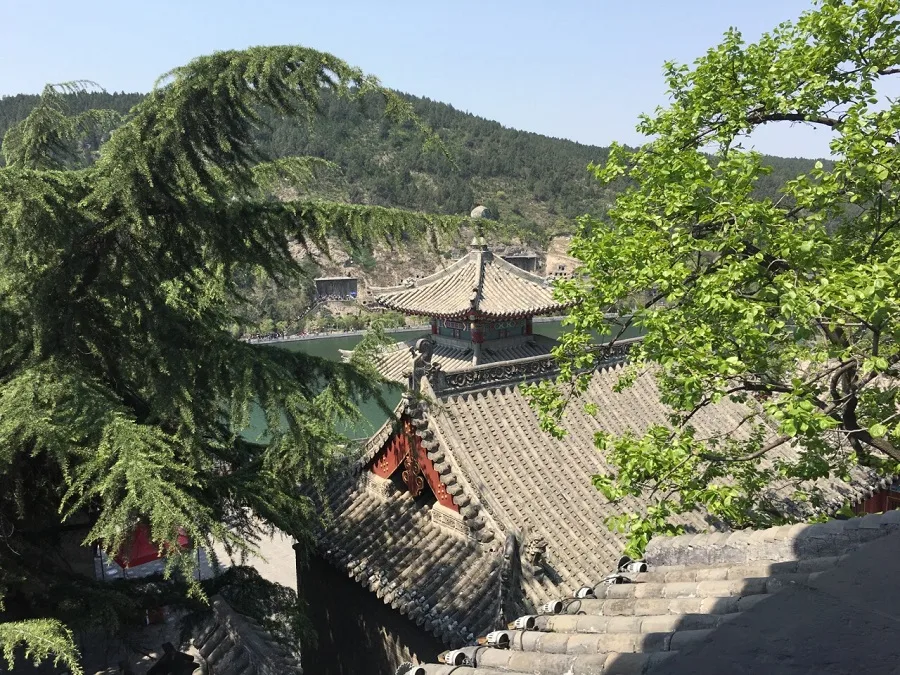
Xiangshan Temple was initially built in 687 AD as a burial pagoda complex for the remains of the Indian monk Dipamkara Shrijnana. During the Wu Zhou period, it was expanded into a temple and named “Xiangshan Temple” by imperial decree. In 832 AD, the Henan Intendant Bai Juyi donated a large sum of money to rebuild Xiangshan Temple, and he authored the “Record of Repairing Xiangshan Temple,” bringing great fame to the temple. Bai Juyi adopted the title “Xiangshan Layman” here and formed the “Xiangshan Nine Elders Society” with other monks. The temple was abandoned at the end of the Yuan Dynasty, rebuilt during the Kangxi reign of the Qing Dynasty, but its geographical location differed from that of the Tang Dynasty Xiangshan Temple. Emperor Qianlong praised Xiangshan Temple during his visit, proclaiming it “the foremost of the ten temples of Longmen,” as inscribed in the Imperial Stele Pavilion. However, it gradually fell into disrepair again at the end of the Qing Dynasty and the beginning of the Republic of China. In 1936, it was restored, and a villa named “Chiang-Soong Villa” was built inside the temple to celebrate Chiang Kai-shek’s fiftieth birthday.
Bai Garden
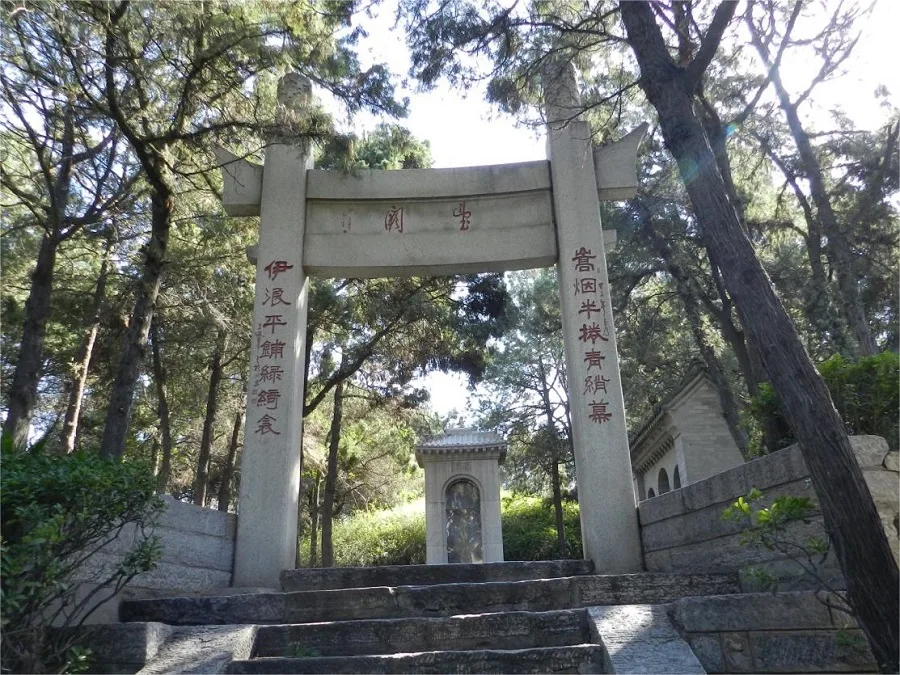
Bai Garden, the burial ground of the Tang Dynasty poet Bai Juyi, is situated atop the Pipa Peak on the eastern mountains of Longmen. Bai Juyi resided in Luoyang for 18 years during his later life, where he oversaw the reconstruction of Xiangshan Temple and enjoyed the landscapes of Longmen. Following his wish, he was buried here after his death. The main attractions within Bai Garden include the Qinggu Area, Leitian Hall, Poetry Corridor, Burial Area, Japanese Calligraphy Corridor, and Daoshi Book House, among others.
Chiang-Soong Villa
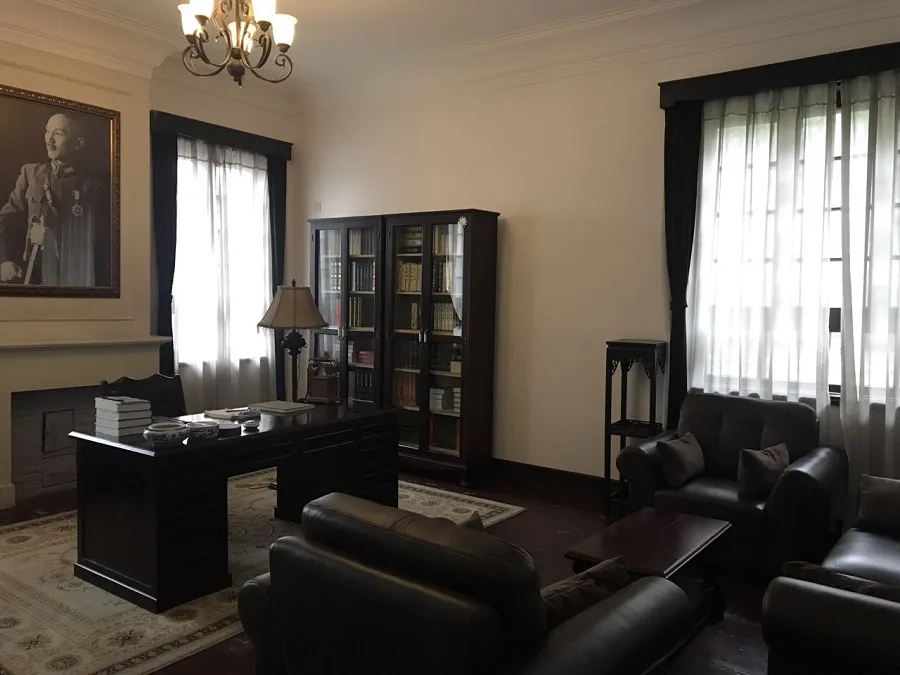
In 1936, to celebrate Chiang Kai-shek’s fiftieth birthday, the local government decided to construct the “Chiang-Soong Villa” on the south side of Xiangshan Temple in Longmen. Chiang Kai-shek visited Luoyang on October 29, 1936, ostensibly to “avoid the celebrations” but actually to plan the “Northwest Suppression of the Communists” campaign. On October 31, he celebrated his fiftieth birthday at the villa, attended by figures such as Zhang Xueliang and Yan Xishan. Subsequently, he inspected the Luoyang Military Academy and Luoyang Power Plant, reviewed heavy artillery units, and made three additional trips to Luoyang with his wife, Soong Mei-ling, to pacify non-hereditary factional forces. He left Luoyang for Xi’an in early December, having spent a total of 36 days in Luoyang, primarily residing in the Chiang-Soong Villa at Xiangshan Temple. Since then, the villa has remained silent, closed to the public for 75 years.

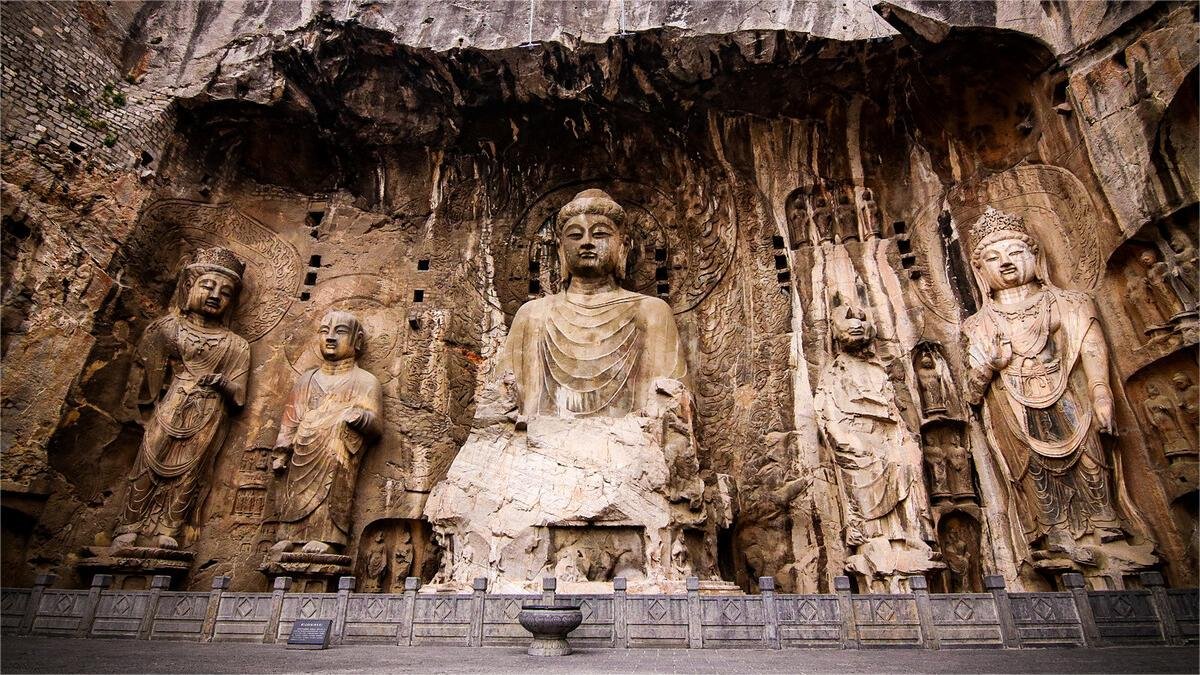

I went over the weekend, and there were quite a few people with a bit of a strong wind.
I followed the route from West Hill Grottoes to East Hill Grottoes, then to Xiangshan Temple, and finally to Bai Garden. I managed to visit everything without missing a spot. The whole tour lasted about four to five hours, which was a bit tiring on the feet, but it was very impressive and definitely worth seeing.